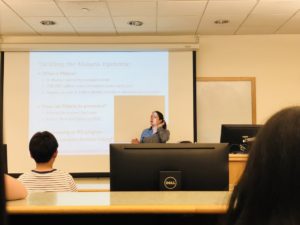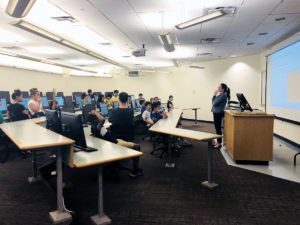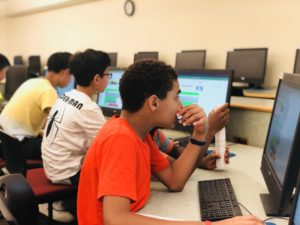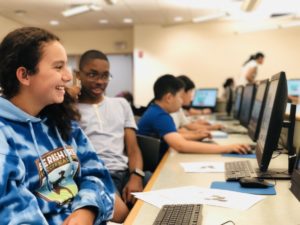On Wednesday, July 17th, Professor Jackie Griffin (MIE) led a session about epidemiology (spread of diseases) for our Summer STEM Program [NUSSP]. This summer, we had 24 program participants, whom are entering grades 6, 7, or 8 this year (September). On this day, we were learning about Human Health and Safety, particularly as to how it relates to natural disasters, such as hurricanes. The big three health risks from natural disasters are: physical injury, mental health problems, and communicable diseases.
Malaria is a mosquito-born infectious disease that affects over 200 million people a year and causing over 500,000 deaths each year. Malaria outbreaks in the wake of flooding is a well-known phenomenon1, and it is critical to stop diseases before they spread into an epidemic or pandemic.
- Professor Griffin teaches students about Malaria
- Professor Griffin asks students what can be done to combat Malaria
Prof. Griffin taught students about different ways people protect themselves from mosquitoes, which may or may not be carrying Malaria, such as by using insecticide-treated bed nets or indoor residual spraying (IRS). Focusing just on IRS, there are factors that change how effective this Malaria-prevention technique is: human population density and distribution, the location of IRS distribution centers, the amount of available sprayers (people), and, of course, available money.
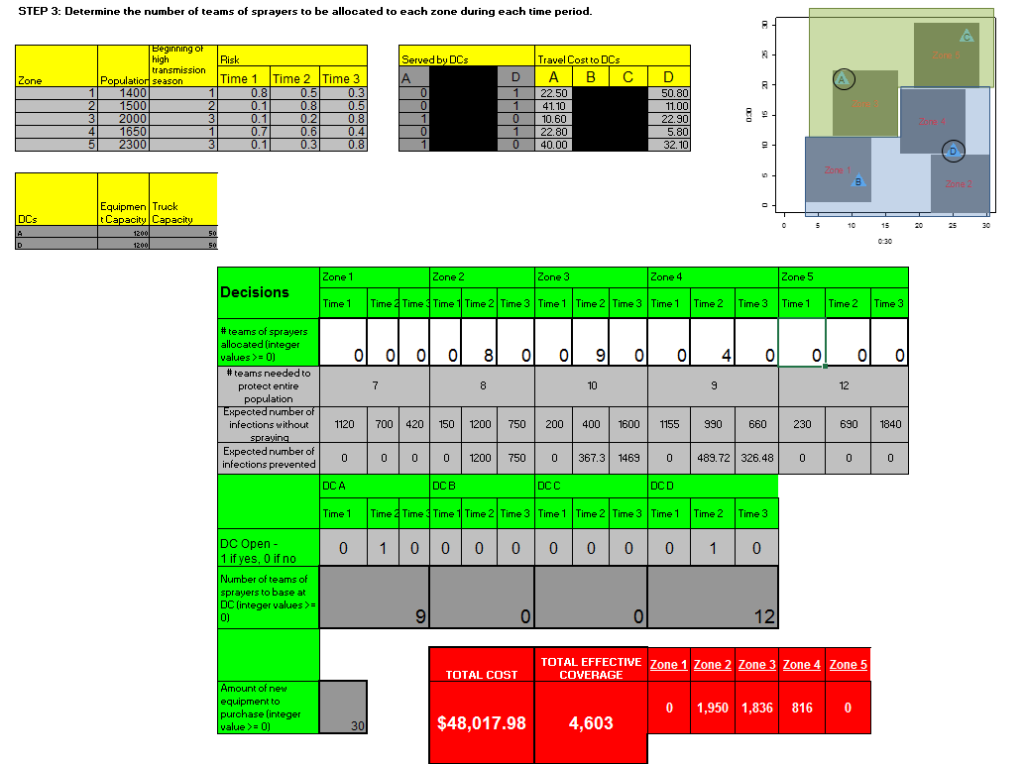 Prof. Griffin is an industrial engineer; industrial engineering can be used to optimize the number of people being protected from Malaria by IRS. For this activity, the students had a hands-on opportunity to practice improving outcomes. Students were given an excel spreadsheet (above); students were tasked with assigning sprayers to each of the five zones during three different time periods, all whilst spending less than $50,000 total. The students were provided with additional information to inform their decisions: population of each zone, risk of Malaria during each zone and time period, beginning of transmission season, and travel costs to the distribution center. This exercise is of course a simplified version of an industrial engineering problem – in the real world, there are much more variables to consider, requiring large amounts of computing power to come up with a solution. Prof. Griffin showed a document that gave an example of all the various parameters that one needs to consider when actually combating Malaria – there were so many!
Prof. Griffin is an industrial engineer; industrial engineering can be used to optimize the number of people being protected from Malaria by IRS. For this activity, the students had a hands-on opportunity to practice improving outcomes. Students were given an excel spreadsheet (above); students were tasked with assigning sprayers to each of the five zones during three different time periods, all whilst spending less than $50,000 total. The students were provided with additional information to inform their decisions: population of each zone, risk of Malaria during each zone and time period, beginning of transmission season, and travel costs to the distribution center. This exercise is of course a simplified version of an industrial engineering problem – in the real world, there are much more variables to consider, requiring large amounts of computing power to come up with a solution. Prof. Griffin showed a document that gave an example of all the various parameters that one needs to consider when actually combating Malaria – there were so many!
- Students allocate resources to protect as many people as possible from Malaria
- Students compete to save the most amount of people whilst keeping their budget under $50,000

